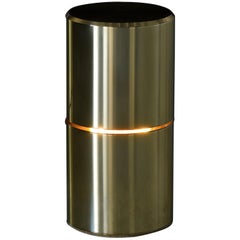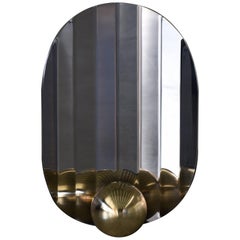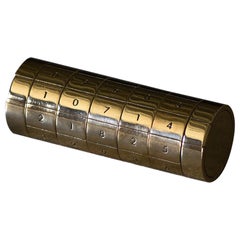Callum Campbell
2010s Australian Modern Scientific Instruments
Brass
2010s Australian Modern Scientific Instruments
Brass, Stainless Steel
2010s Australian Modern Scientific Instruments
Brass
People Also Browsed
Antique Early 19th Century English Georgian Balustrades and Fixtures
Wrought Iron
Antique Late 19th Century American Fountains
Cast Stone
Antique Early 19th Century Swedish Neoclassical Wall Mirrors
Wood
21st Century and Contemporary Mexican Mid-Century Modern Table Lamps
Textile, Wood, Linen, Fiberglass
1990s Italian Renaissance Sterling Silver
Sterling Silver
Antique 16th Century French Renaissance Figurative Sculptures
Sandstone
21st Century and Contemporary Chinese Books
Paper
Antique 19th Century Russian Sterling Silver
Silver
Antique 19th Century French Paintings
Paper
Vintage 1940s Swedish Art Deco Table Lamps
Pewter
Vintage 1980s French Games
Metal
Antique Early 19th Century English George IV Figurative Sculptures
Sterling Silver
Early 2000s Italian Baroque Busts
Carrara Marble
Vintage 1950s Danish Scandinavian Modern Vases
Porcelain
Vintage 1950s Danish Scandinavian Modern Vases
Porcelain
Antique 19th Century European Belle Époque Dinner Plates
Porcelain
A Close Look at Modern Furniture
The late 19th and early 20th centuries saw sweeping social change and major scientific advances — both of which contributed to a new aesthetic: modernism. Rejecting the rigidity of Victorian artistic conventions, modernists sought a new means of expression. References to the natural world and ornate classical embellishments gave way to the sleek simplicity of the Machine Age. Architect Philip Johnson characterized the hallmarks of modernism as “machine-like simplicity, smoothness or surface [and] avoidance of ornament.”
Early practitioners of modernist design include the De Stijl (“The Style”) group, founded in the Netherlands in 1917, and the Bauhaus School, founded two years later in Germany.
Followers of both groups produced sleek, spare designs — many of which became icons of daily life in the 20th century. The modernists rejected both natural and historical references and relied primarily on industrial materials such as metal, glass, plywood, and, later, plastics. While Bauhaus principals Marcel Breuer and Ludwig Mies van der Rohe created furniture from mass-produced, chrome-plated steel, American visionaries like Charles and Ray Eames worked in materials as novel as molded plywood and fiberglass. Today, Breuer’s Wassily chair, Mies van der Rohe’s Barcelona chair — crafted with his romantic partner, designer Lilly Reich — and the Eames lounge chair are emblems of progressive design and vintage originals are prized cornerstones of collections.
It’s difficult to overstate the influence that modernism continues to wield over designers and architects — and equally difficult to overstate how revolutionary it was when it first appeared a century ago. But because modernist furniture designs are so simple, they can blend in seamlessly with just about any type of décor. Don’t overlook them.
Finding the Right Games for You
There’s no better way to wind down after a week of work than with a well-designed antique, new or vintage game.
A beautifully designed contemporary or vintage game can introduce an element of fun to any room in your home — and it doesn’t have to be limited to the game room. The right mid-century or antique chess set or backgammon board can mean high stakes as well as high style for any entertainment room or cheery home bar area, with works from the period proving as pivotal to relaxation as they are eye-catching statement pieces.
While trends come and go, a unique vintage games table never goes out of style. Chess has an enduring and universal appeal, of which we were reminded following 2020’s successful Netflix show The Queen’s Gambit, while classic tric-trac tables are showstoppers in a secretive way, affording party guests a treasury of gaming under the guise of a fine neoclassical writing desk. But in shopping for the latter, strategize your next move carefully — an 18th-century tric-trac table designed in the Louis XVI style can get costly. Gambling games are always on trend, and, in a pinch, you can turn your standard console table or coffee table into a platform for roulette, cards or craps to introduce a little cheeky fun at your next soiree.
Table games such as pool, foosball and Ping-Pong — which is getting a makeover in the hands of today’s designers — can transform your already winning game room, while integrating games or games tables in any corner of your home can support your effort to make every bit of your space more warm and inviting. Browse a vast collection of antique, new and vintage games today on 1stDibs.


